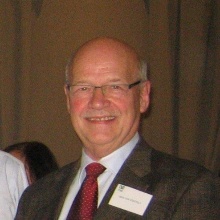Contact
+49 711 685 64408
+49 711 685 64442
Email
Pfaffenwaldring 55
70569 Stuttgart
Deutschland
Room: 8.106
Publications of Laszlo v. Szentpaly:
2020
- von Szentpály, L. (2020). Theorems and rules connecting bond energy and bond order with electronegativity equalization and hardness maximization. Theoretical Chemistry Accounts, 139 (3), 54.
2019
- von Szentpály, L., Schwarz, W. H. E., Stoll, H., & Werner, H.-J. (2019). Correspondence on “Core Electron Topologies in Chemical Compounds: Case Study of Carbon versus Silicon.” Angewandte Chemie International Edition, 58, 2–6.
2018
- von Szentpály, L. (2018). Multiply Charged Anions, Maximum Charge Acceptance, and Higher Electron Affinities of Molecules, Superatoms, and Clusters. Acta Physico-Chimica Sinica, 34 (6), 675.
- Szentpály, L. von. (2018). Eliminating symmetry problems in electronegativity equalization and correcting self‐interaction errors in conceptual DFT.
2017
- von Szentpály, L. (2017). Hardness maximization or equalization? New insights and quantitative relations between hardness increase and bond dissociation energy. Journal of Molecular Modeling, 23 (7), 217.
2016
- von Szentpály, L. (2016). Comment on “A new equation based on ionization energies and electron affinities of atoms for calculating of group electronegativity” by S. Kaya and C. Kaya Comput. Theoret. Chem. 1052 (2015) 42–46. Computational and Theoretical Chemistry, 1083, 72–74.
2015
- von Szentpály, L. (2015). Symmetry Laws Improve Electronegativity Equalization by Orders of Magnitude and Call for a Paradigm Shift in Conceptual Density Functional Theory. The Journal of Physical Chemistry A, 119 (9), 1715–1722.
- von Szentpály, L. (2015). Physical Basis and Limitations of Equalization Rules and Principles: Valence-State Electronegativity and Valence-Pair-Affinity versus Operational Chemical Potential. Quantum Matter, 4 (1), 47–55.


